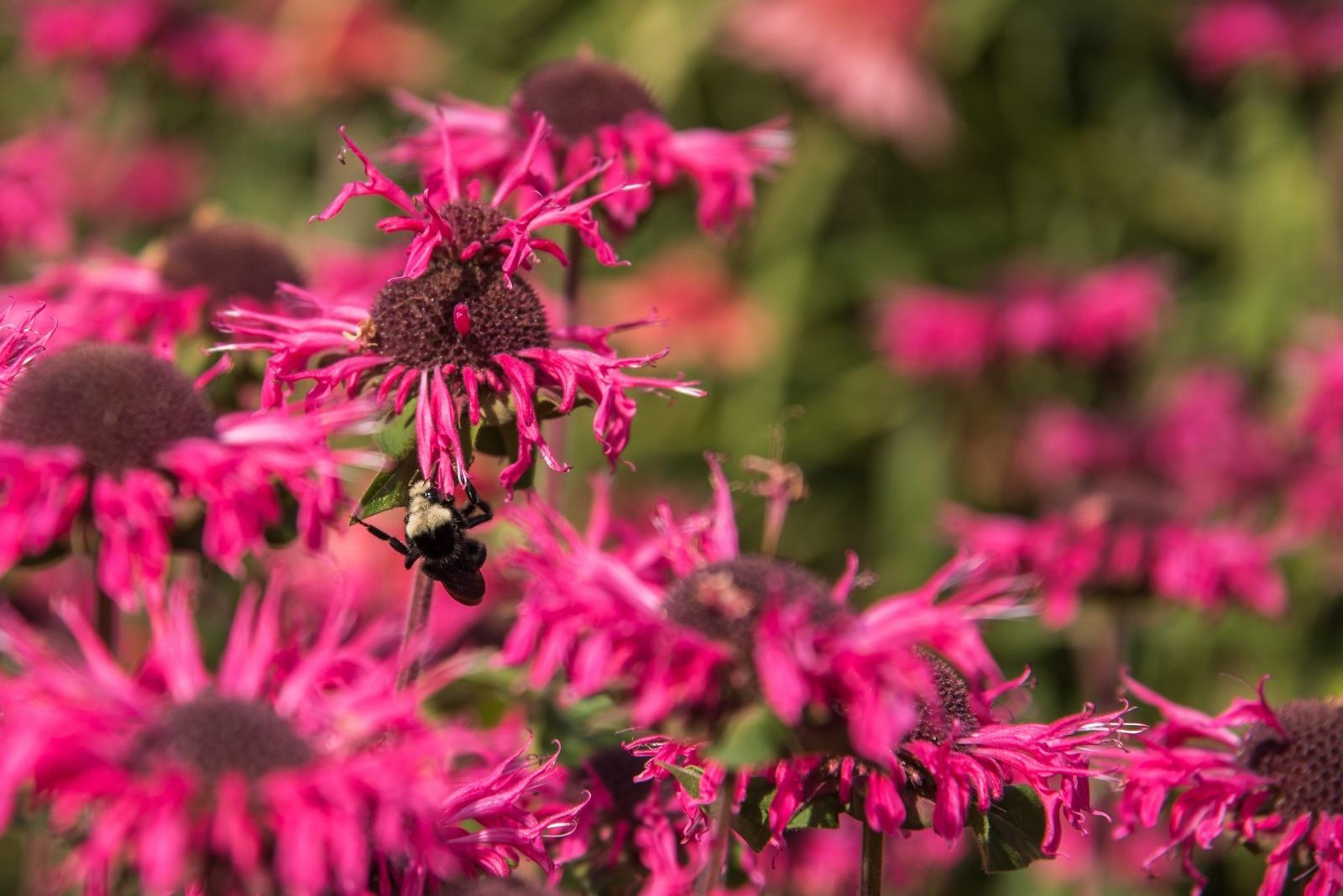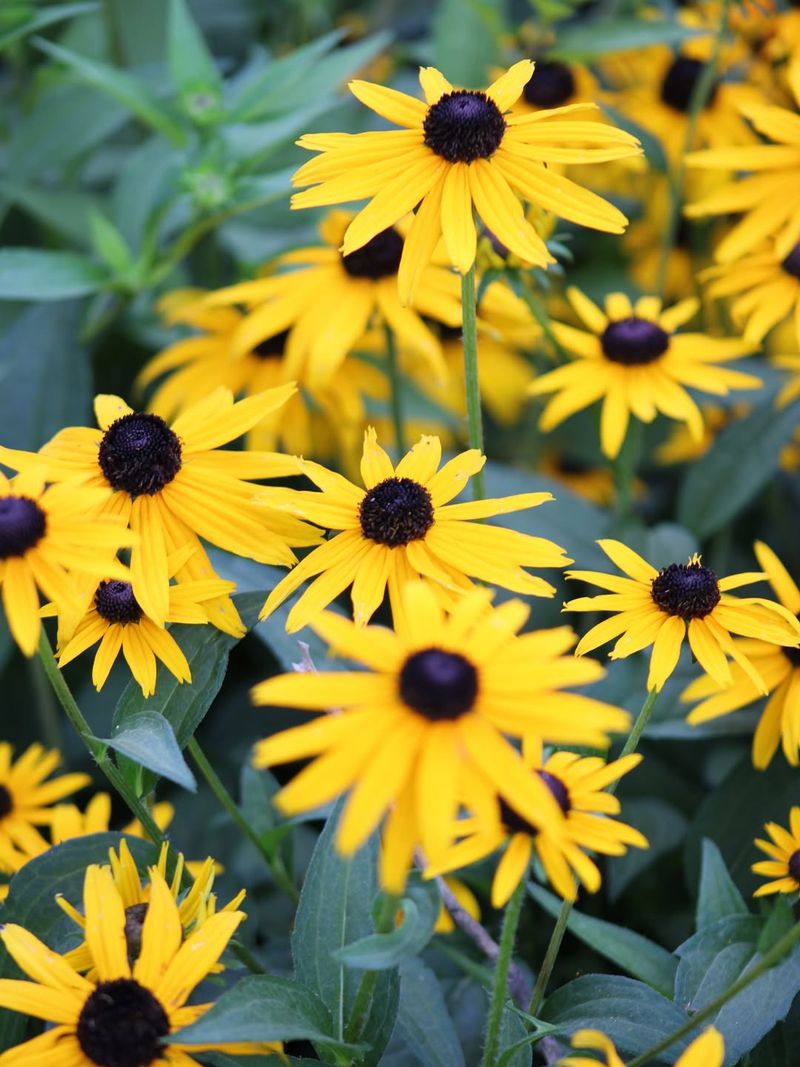With a few thoughtful planting choices, Pennsylvania gardens can turn into lively retreats for birds. It’s amazing how the right mix of flowers and bulbs can invite feathered visitors to stay awhile.
Birds need more than just a place to perch—they’re looking for food, shelter, and safe nesting spots. Native plants offer all that while blending beautifully into your landscape.
I’ve found that choosing bird-friendly varieties brings color to your yard and life to your mornings. It’s a simple way to support local wildlife while enjoying a garden that thrives through every season.
1. Purple Coneflower (Echinacea)
Goldfinches absolutely adore the seeds from these stunning purple blooms. Once the flowers fade in late summer, leave the seed heads standing instead of cutting them back.
Birds will flock to your garden for this nutritious snack. Purple coneflowers are incredibly tough and handle Pennsylvania’s weather like champions.
They bloom from June through September, providing months of beauty and bird food. Plant them in sunny spots with well-drained soil for best results.
2. Black-Eyed Susan (Rudbeckia)
With cheerful golden petals radiating around dark centers, these native wildflowers bring sunshine to any garden space.
Chickadees, nuthatches, and finches eagerly harvest the seeds throughout fall and winter months. Black-eyed Susans spread naturally, creating larger patches each year without being invasive.
They tolerate drought remarkably well once established in your Pennsylvania landscape. Pair them with other native plants for a natural meadow look that birds find irresistible all season long.
3. Sunflowers (Helianthus)
Nothing beats watching cardinals and blue jays crack open sunflower seeds right in your backyard! Plant a variety of heights, from dwarf types to towering giants reaching eight feet tall.
The massive seed heads become bird feeders on stalks when autumn arrives. Kids especially love watching these cheerful flowers track the sun across the sky during summer days.
Choose spots with full sunshine and rich soil to grow the biggest, most productive blooms possible.
4. Asters (Symphyotrichum)
Late-season bloomers like asters provide critical food sources when many other flowers have finished for the year.
These daisy-like beauties explode with purple, pink, or white flowers just as summer transitions into fall. Sparrows and juncos appreciate the tiny seeds that develop after blooming ends.
Native Pennsylvania asters adapt perfectly to local conditions and require minimal maintenance once established. Plant them in clusters for maximum visual impact and bird appeal throughout your landscape.
5. Tulips (Tulipa)
Early spring brings hummingbirds searching for nectar, and tulips offer some of the first colorful blooms available.
While tulips primarily attract hummers with their bright colors, they also signal to other birds that warmer weather has arrived. Plant bulbs in fall, about six inches deep, for spectacular spring displays.
Choose varieties in reds, oranges, and yellows since hummingbirds prefer these vibrant shades. Combine tulips with other early bloomers to create a welcoming springtime buffet for returning migrant birds.
6. Bee Balm (Monarda)
Hummingbirds zoom straight to bee balm’s tubular red flowers like tiny helicopters refueling mid-flight. This native perennial blooms throughout summer, providing consistent nectar sources when birds need energy most.
The plant spreads gradually, forming attractive clumps that fill garden spaces beautifully. Bee balm also attracts beneficial insects, creating a complete ecosystem in your yard.
Choose mildew-resistant varieties for Pennsylvania’s humid summers, and plant in areas with good air circulation for healthiest growth.
7. Allium Bulbs
Did you know these ornamental onions produce seeds that many bird species find delicious? The dramatic purple globes bloom in late spring, standing tall on sturdy stems above garden beds.
After flowering, the seed heads remain architecturally interesting while feeding finches and sparrows. Alliums are deer-resistant, which means more flowers survive to produce bird food.
Plant bulbs in fall alongside tulips and daffodils for a spectacular layered spring display that transitions into summer bird feeding stations.
8. Coreopsis (Tickseed)
Goldfinches perform acrobatic shows while balancing on coreopsis stems to reach the abundant seeds. These cheerful yellow flowers bloom continuously from early summer through fall with regular deadheading.
However, leave some spent flowers standing so birds can harvest the nutritious seeds they contain. Coreopsis tolerates poor soil and drought conditions exceptionally well, making it perfect for low-maintenance Pennsylvania gardens.
The bright blooms also attract butterflies, doubling your garden’s wildlife appeal with minimal effort required.
9. Daffodils (Narcissus)
Robins and other early migrants return to Pennsylvania just as daffodils burst into bloom, signaling that spring has truly arrived. While daffodils don’t provide direct food, they mark the beginning of insect activity that birds desperately need.
These cheerful bulbs multiply naturally over years, creating larger displays without additional planting. Deer and rodents avoid daffodils completely, ensuring your spring show remains intact.
Plant hundreds of bulbs in fall for a breathtaking welcome mat that celebrates returning feathered friends each spring.
10. Salvia (Sage)
Hummingbirds make repeat visits to salvia’s nectar-rich tubular flowers throughout the entire growing season. Choose perennial varieties that return year after year, or plant annuals for non-stop summer color until frost.
Blue and purple salvias are particularly magnetic to hummers, though red varieties work wonderfully too. These drought-tolerant plants thrive in Pennsylvania’s hot summers with minimal watering once established.
Position them near windows or patios where you can enjoy close-up views of hummingbird feeding behaviors daily.











